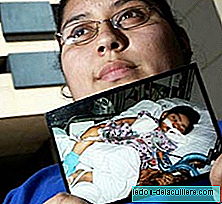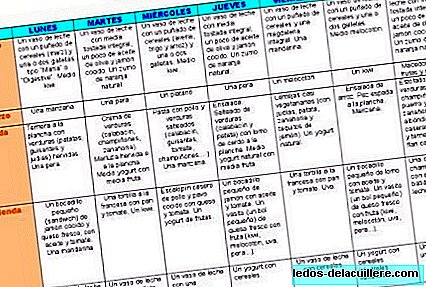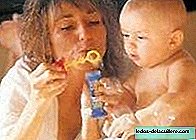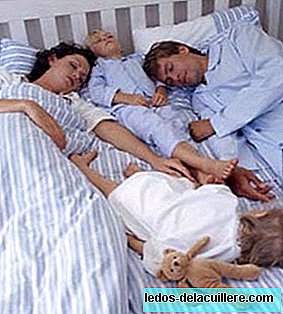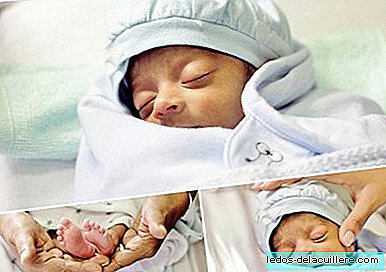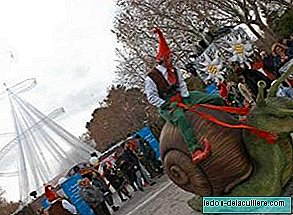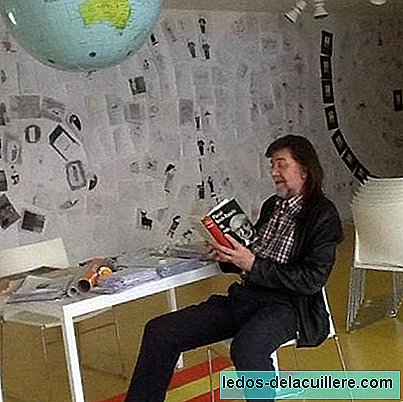
Jose Rivela explains that he was born by chance, like almost everything in life, in 1956 in Sil stop (Pray) He currently works as drawing teacher in the Institute of secondary education of Celanova (Orense) where it began in 1986. Its objective is to make the subject that teaches its students more than a subject and as he says with work, determination and enthusiasm, children can learn creatively thanks to the collaboration of leading artists, cultural institutions and media. José Rivela is not only the master of the drawing and plastic class, he also imparts wisdom, knowledge and a deep love for the art world. It is an example for everyone to know their work and especially satisfying is to see high school children working, talking with artists and learning while developing their imagination and improving other skills such as communication and emotion management. Then the interview with José Rivela:
How did you come up with the possibility that students could enrich their learning of drawing by putting them in contact with artists, writers, publishers, etc.
I think you have to study theory and practice. The theory must be put into practice. In other words, things must be done so that students realize that what they study is important and can be shown and used for something. That is why I got in touch with people who manage their job well, because they learn a lot from them and they are the ones who can best guide students because they have a job that has helped them earn money and live from it. Students thus realize that theory and practice go hand in hand and that studying also serves something in life. That's why I came up with the idea of getting in touch with all of them
What kind of material you use from artists: columns, vignettes, illustrations, etc. Are all artists related to journalism?
I use all kinds of materials: columns, vignettes, illustrations, paintings etc. and from that material, in those ages, 12 to 17 years, paper and pencil is the most important, so that students or apprentices recreate those works. If they learn to manage well with the pencil, they learn to draw. That is the essential. Then, over time, the different techniques, little by little, are learned. But the essential thing is that they realize that drawing serves something. The people who collaborate are related to journalism, painting, sculpture, writing, etc. Everything is related.
How many years have you been working with this program and what are the main achievements that you have achieved?
I have been working like this for 15 years and the main achievements that we have achieved is that the students have exhibited in the Galician Pedagogical Museum in Santiago de Compostela, in the ABC Museum of Madrid and in this course they will exhibit in Orense and in Lisbon. They are getting to know the world and, in passing, they know people who manage their job well and also realize that he wants something, something costs him. You have to work, you have to be disciplined, there has to be an order, without haste and without pause. That is the important thing to educate yourself.
You have to work, you have to be disciplined, there has to be an order, without haste and without pause. That is the important thing to educate
How many artists have collaborated with students in all these years and what is the method you use to select
They have collaborated and continue to collaborate all, for now about 130, but more are being incorporated every year. I name some of you: Louise Bourgeoise, Jean Miotte, Fernando Arrabal, Gao Xinjian, Michell Houellebecq, Milan Kundera, Cristino de Vera, Rafael Canogar, Din Matamoro, Ricardo Martínez, Joana Vasconcelos, Igort, Guillermo Martín Bermejo, Marina Nuñez, Ana Nance , Trinidad Ruiz Jiménez (poet and editor of Olifante publishing house), Dionisio González, Marina Núñez, Din Matamoro, Dionisio González, Hermann Tertsch, Gabriel Albiac, Ramón Pérez Maura, David Rubín, David Maisel, El Roto, Eduardo Riestra (wind editions ), Monu & noes, Aitor Saraiba, Ramón Conde, Antonio del Real Flor, José Tortosa, Riki Blanco, Sean Mckaoui, Joan Crisol, Paco Roca and many more. And they come from all over the world.
Below you can see some details of the work of the students of IES Celanova:
How is the creative process that you teach teenagers and how you prepare it in class
I show them many things and they choose what they like best. You have to start like this. First they have to take pleasure in the matter and then they become interested in themselves and one thing leads to another. That is the method. That is the way.
What techniques and tools students use: paper, pencil, colors, computers, etc.
Especially paper and pencils. With minimum means, maximum results must be achieved. Joseph Albers taught us that, which I certainly recommend the exhibition at the Juan March Foundation, which is another of the Foundations that collaborates with the students. So do the ABC Museum, the Mapfre Foundation, the Botin Foundation, the Thyssen Museum, the Prado Museum.
With minimum means you have to achieve maximum results
After more than ten years of program with students, are there any who have dedicated themselves to it for a living in a professional way?
Some are in it, but learning the trade well and professionalizing in that and in any trade costs a lot. A painter or a sculptor or a photographer or a writer needs a lot of time to professionalize in his own. Several are in it, but that will be seen with more time. Cristino de Vera when he began in the trade was several years contemplating several paintings of the Prado Museum and began to see the first fruits of his trade when he was almost fifty years old. They are trades to which many hours of work must be dedicated.
What does this way of working teach and contribute to students, does it help them connect with reality and build critical vision? Are you encouraged to read and learn more about what is happening in the world?
To the first question I answer yes and to the second one too.
How do you interact with the other professors of IES Celanova, do you work together with them?
With some yes, but you have to devote many hours of work to the matter and not all are for the work.
How IES and parents respond to this way of working
They respond well. Better the parents and the students, that the own directives of the institute, because to these, anything that leaves their administrative vision scares them a little.
What are the next objectives you have with this program that seems to already have sponsors to promote the dissemination and show the work of your students
As I told you earlier in this course, April 2015, they will exhibit in Orense, and in June 2015 in Lisbon.
In this link you can search the video of To Magazine dated 05/13/2013 and from the minute 27:40 to 33:40 the TVG report on the exhibition of the drawings appears in the Galician Pedagogical Museum.
Also in the 11:30 minute of the next video you can see Jose Rivela on the news of the first television network in Galicia.
 Telexornal-Galicia - 05/20/13
Telexornal-Galicia - 05/20/13And here the interview with Jose Rivela which is an example of a job well done, dedicated, professional and also gets the thanks and recognition of your students. It is also noteworthy the mobilization work which he does with Museums, Schools, Artists and Publishers that collaborate with him so that children and young people learn and participate.
I give the thanks to José Rivela for his generosity in the answers and for sharing with us the work at IES Celanova. In addition, I leave below a compilation of links, including their website, from which you can learn more about their work and their experience linked to encouraging the attitude of encouraging children using the plastic and the He drew As a fundamental catalyst.



